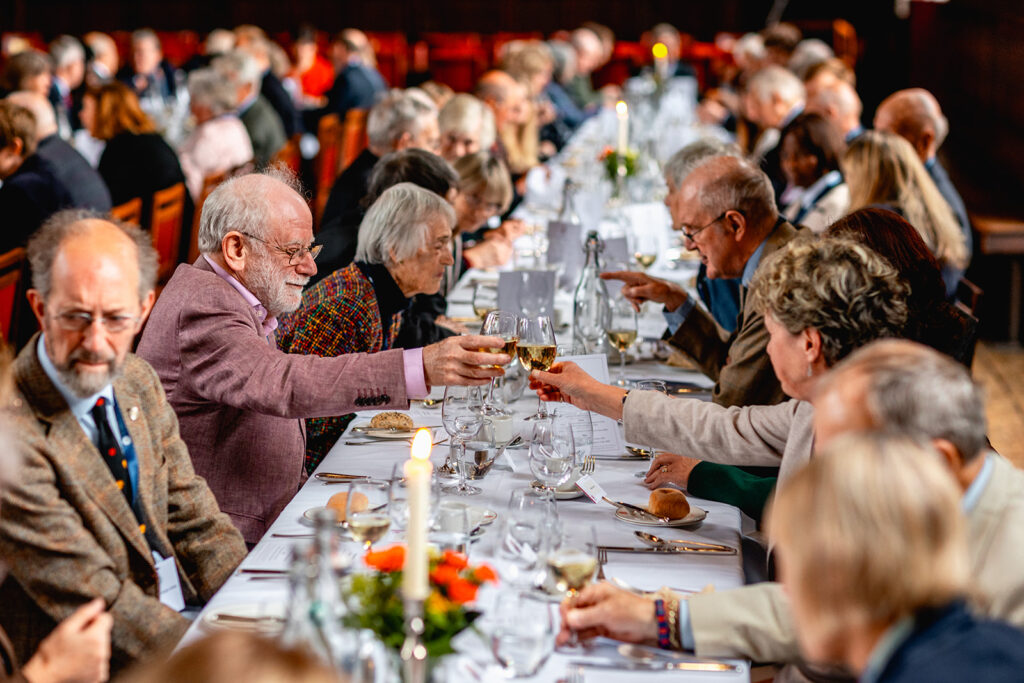
If you have ever wondered what kind of special vintages are stored in the wine cellars of St John’s College, Jim Wocha, Wines and Provisions Manager, is the man to ask. For the past 18 years he has worked at St John’s after starting his career in wine retail following a degree in modern languages.
He reveals that, surprisingly, the cellars are not stuffed with priceless vintage bottles – although there are a few that date back to the 1940s. Instead, as a working cellar supplying wine at the table for hundreds of Fellows and students every week, the stocks kept in the vaults can move quite quickly.
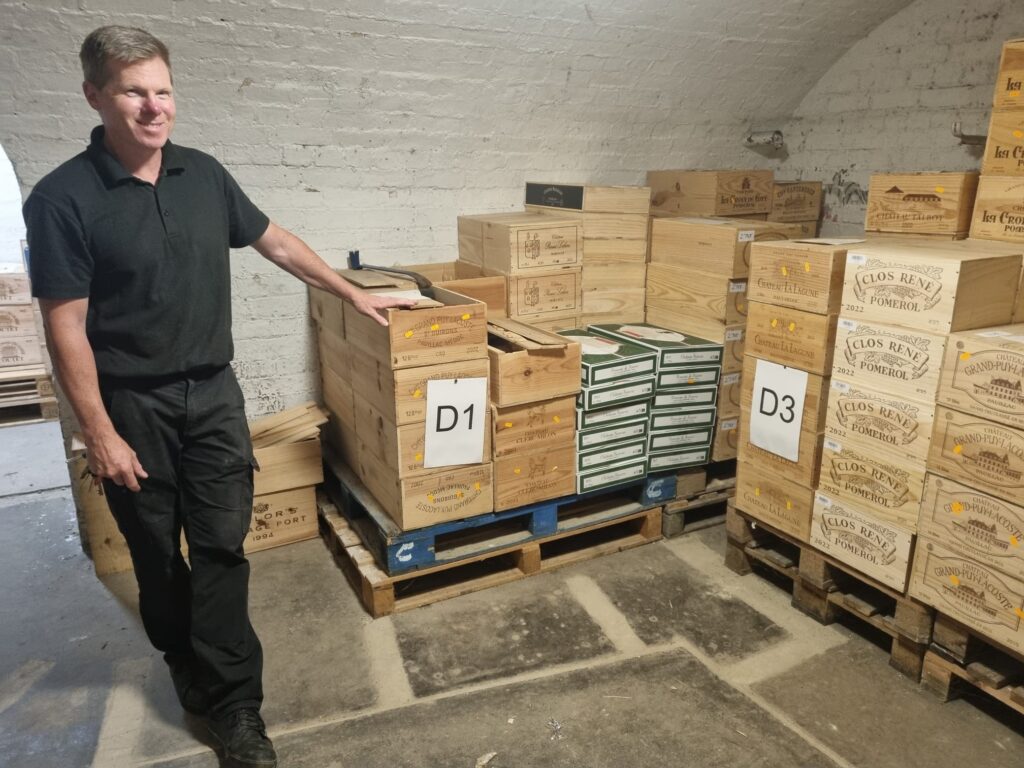
“There’s a variety of wine, some that’s in long-term storage that we buy for future events,” says Jim.
“A lot of our red Bordeaux, for example, is bought many years in advance, and then we store it, and it matures, and then we use it for future feasts.”
Formal Hall dinners, in which students wear black gowns and can enjoy three-course candle-lit meals in the sixteenth century Hall, take place five nights a week and Jim has a strict budget when selecting those wines.
The students pay a set price and, although the College subsidises those meals, the wine has to fall into a certain price bracket. Jim looks further afield to New World wines, such as those from Chile, Argentina, and Australia. Often, this means capitalising on market surpluses and supplier deals and the College gets through around 100 of these bottles a week. “It’s about getting some really decent wine at good prices,” says Jim.
Every bottle in the cellar has a destination. Premium vintages often await the College’s most celebrated feasts such as the Port Latin Feast and the Cripps Feast. A committee that sits four times a year selects wine for these special events.
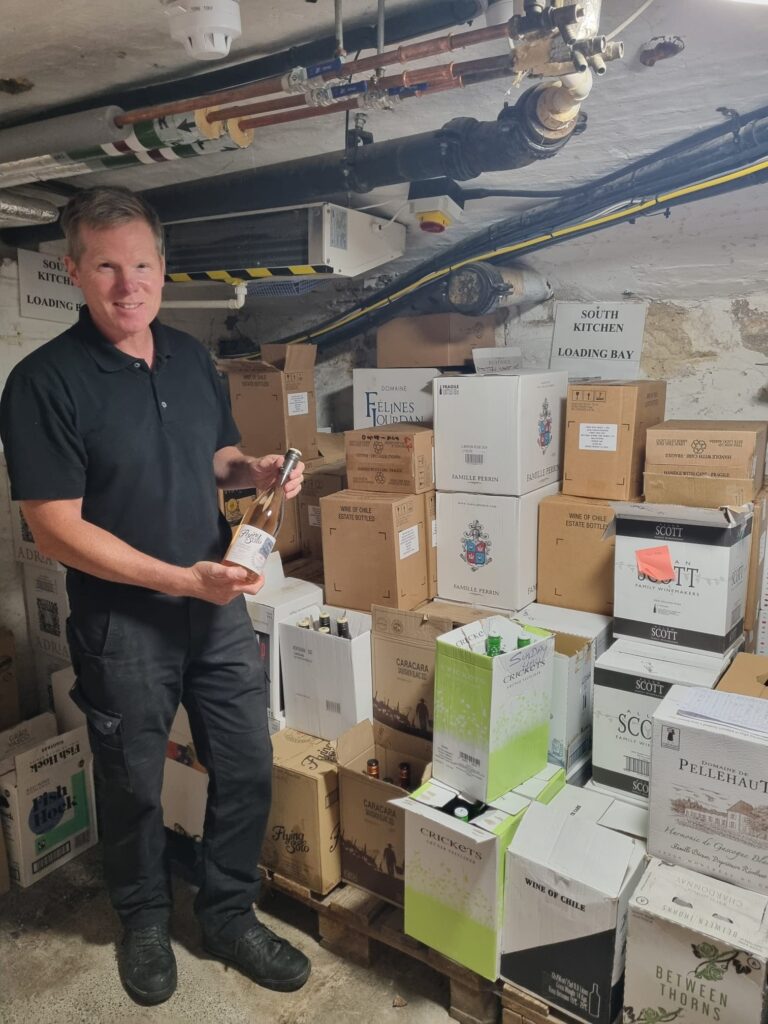
“It also depends on the year. We don’t buy indiscriminately. For example, we didn’t buy any from the last Bordeaux vintage, which was 2023, as it wasn’t very good. But conversely, 2022 was good,” he says.
“Most wine merchants will produce what’s called a vintage report, so they’ll list the individual wines that they think are good, and whether the vintage overall is good. And then you would buy accordingly. Earlier this year, we went to a tasting which had all these young wines presented at one time. We tasted it, and based off that, and looking at prices, we decided it wasn’t worth buying because the price wasn’t matching up with the quality.”
Jim explains that a quality Bordeaux, the cellar’s backbone for feasts, can be aged for around 20 years to reach its full potential: “A basic Bordeaux wine, you might drink within the first five years of its life, but then as it goes up through the quality levels, you get more concentration, more tannin, more structure to that wine. And if you try and drink it really young, it’s not very pleasant; the flavors haven’t evolved.”
Some vintages, such as wine from 2000, a benchmark year, still linger in the cellar, awaiting the right occasion. “We still have bottles from 2000. These would come out for the top feasts,” Jim notes.
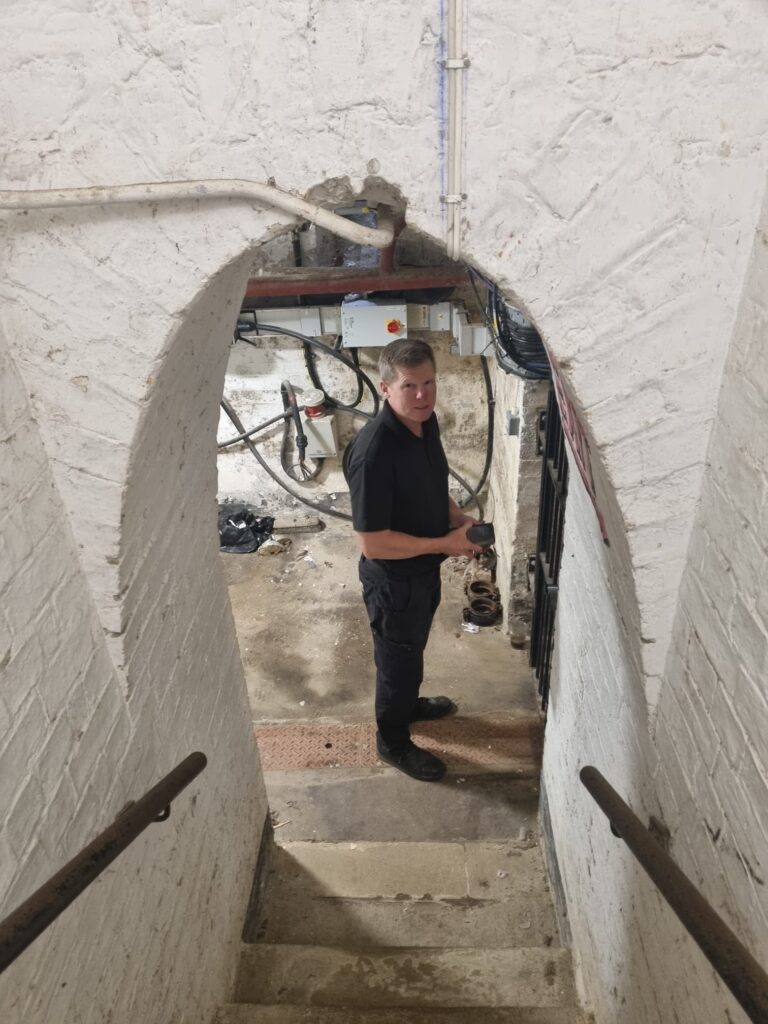
One of the oldest wines kept in the cellar is a rare first growth claret, Chateau Haut-Brion, from 1945. The College no longer buys such expensive wines as prices have risen dramatically, and the quality of this particular wine is uncertain because of its age. However, Jim was recently at a Fellow’s tasting at which he tried a bottle from 1943. “It was surprisingly good,” he said.
The secret to keeping wine in good condition is making sure it is kept at a stable temperature, “around 12 degrees is ideal”, and storing it in the correct position.
As Jim explains: “With old wine, you’ve got to be conscious of the level of the wine in the bottle because it does evaporate over time. Once it gets below a certain level, it might not be any good anymore, because too much air affects the wine adversely.
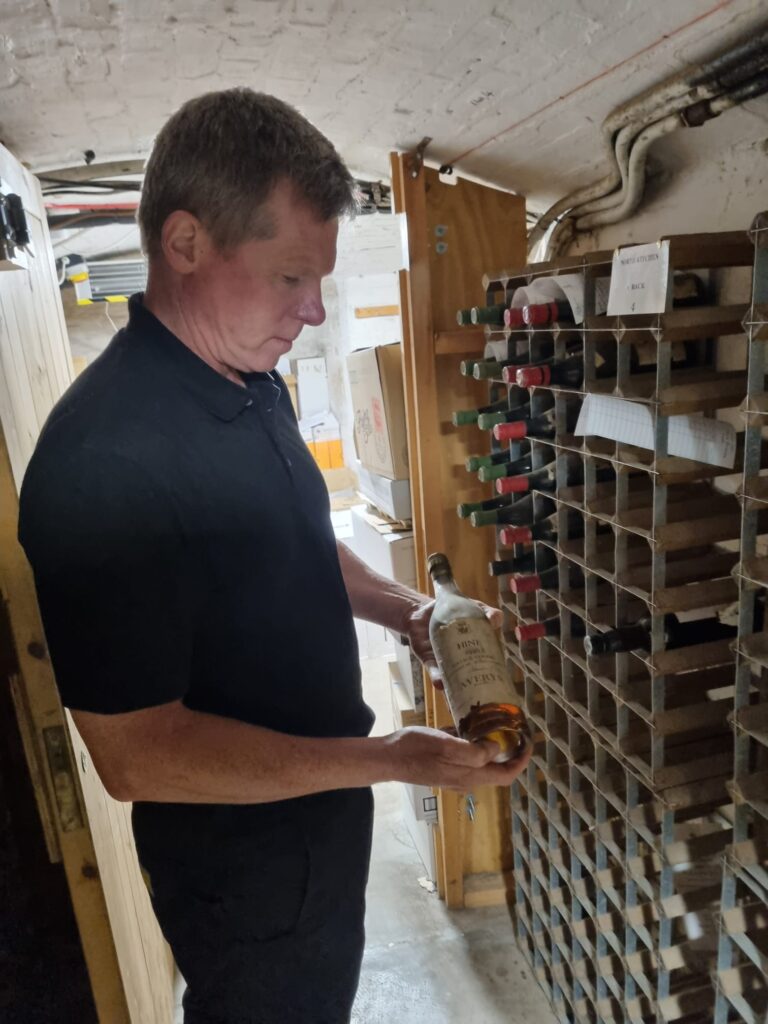
“It has to be stored on its cork, keeping the bottle horizontally, because if you stand the wine up for too long, you’re leaving a gap between the cork and the wine. The cork can dry out, and if the corks dry, they can shrink. And then you lose the cork, and then you’ve lost the wine.
“A cork allows a minute amount of oxygen in which allows wine to evolve with that little bit of oxygen in the wine. It changes the structure of wine over time. If you’ve got a screw cap, then the wine is not going to change. Quality wine is pretty much exclusively bottled under natural cork.”
The College is now considering new ways to share these historic treasures, including possible auctions for alumni. However, Jim is clear that the College’s approach to wine is not about financial gain: “We’re not buying to invest. We’re buying to drink it,” he says.
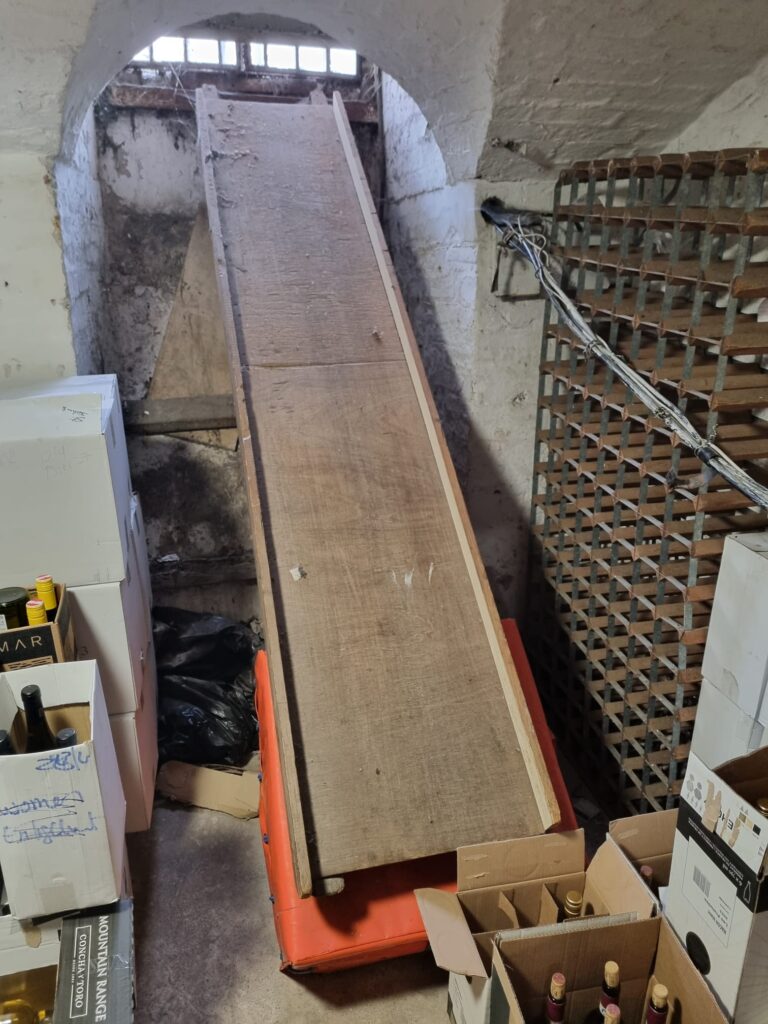
The more expensive bottles in the cellar might fetch £120–£130 on the open market. These include a 2001 vintage Chateau Pichon Longueville Baron and Domaine du Chevallier from 2000. There is no collaboration with the cellars of other colleges and, Jim promises, no tunnels between St John’s and other cellars either.
Jim’s journey into the world of wine wasn’t planned at first. “I sort of floundered around for a while and couldn’t decide what I wanted to do,” he recalls, describing his post-university days. A Christmas job in a wine shop as well as a year living in France kindled what would become a lifelong passion. After 15 years in the retail wine world, including a stint at Majestic Wine’s graduate training scheme, where he worked through the WSET diploma, the academic equivalent of an A-level in wine, Jim landed at the College, where wine is a vital part of daily life.
At the heart of his role is the College’s wine cellar, although his responsibilities are much wider than that. “My job’s not 100 percent looking after the wine. These days, it’s probably 50-50, food and wine.”
Half of Jim’s remit is provisions, working closely with the kitchens and chefs to source dry goods and to harmonise dishes with the ever-evolving wine list. When it comes to matching wine to the chef’s creations, he relishes the challenge of finding suitable pairings. “Some of the dishes the chef comes out with are quite challenging for wine matching. A tomato sauce is quite a difficult one to match because of the acidity in tomato, it can clash with the wine. Often an Italian red is the best match.”
The hardest dish he had to find a wine to pair with recently was cuttlefish in red wine sauce. Jim explains: “The Wine Committee makes decisions about which wines to pair with dishes from the feasts menus. One that the chef presented us with was cuttlefish with a red wine sauce. That was tricky because it’s fish, which you would usually serve with a white wine but you’ve got red wine sauce. In the end we chose a light red to go with it. But that was challenging to find something that went with both aspects of the dish.”
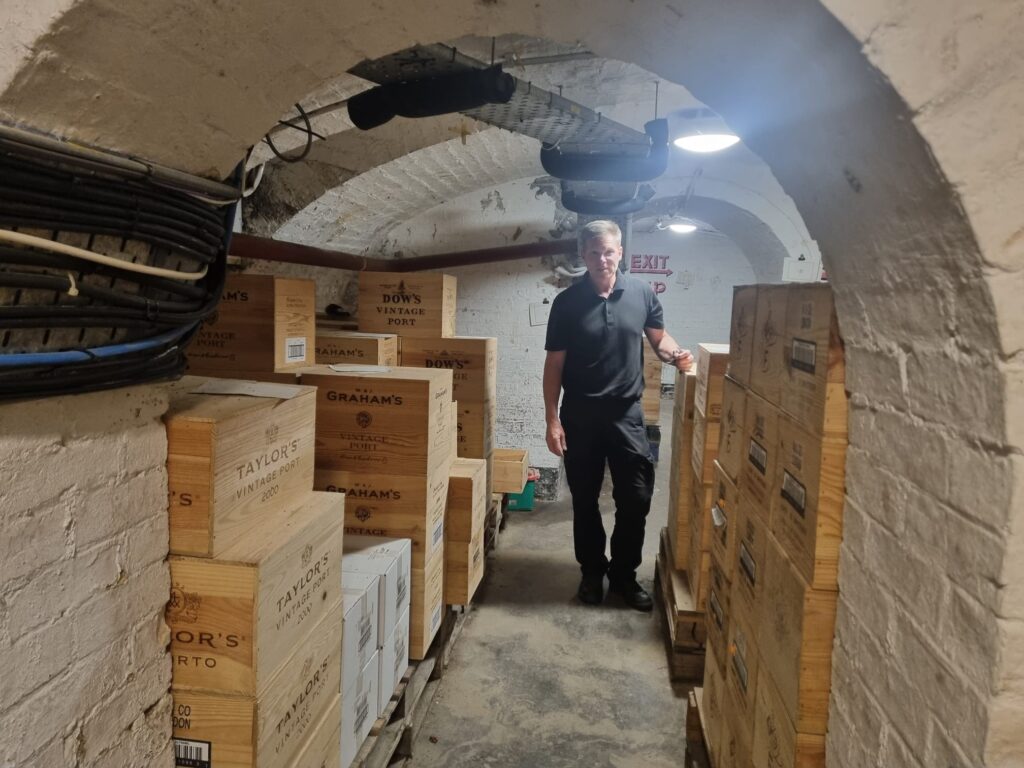
Chicken, too, is sometimes a puzzle: “I’d usually have white wine with chicken but the Fellows tend to prefer a red. You don’t want a heavy red with lots of tannin in it for a chicken dish. You’ve got to find a lighter style red, like a Pinot Noir.”
The Fellows dine six times a week in the Combination Room, a large dining room upstairs in Second Court. Jim says: “I get the menu, choose the wine accordingly, and that wine is much more varied. It comes from all over the world, really. I don’t get it right all the time. Sometimes you get feedback that a wine didn’t really work, but more often than not, I tend to find something that will work.”
At Johnian dinners, the committee ensures the wines are top quality and offer a well-rounded experience. “I stay in the background on the night to ensure everything goes smoothly,” Jim says.
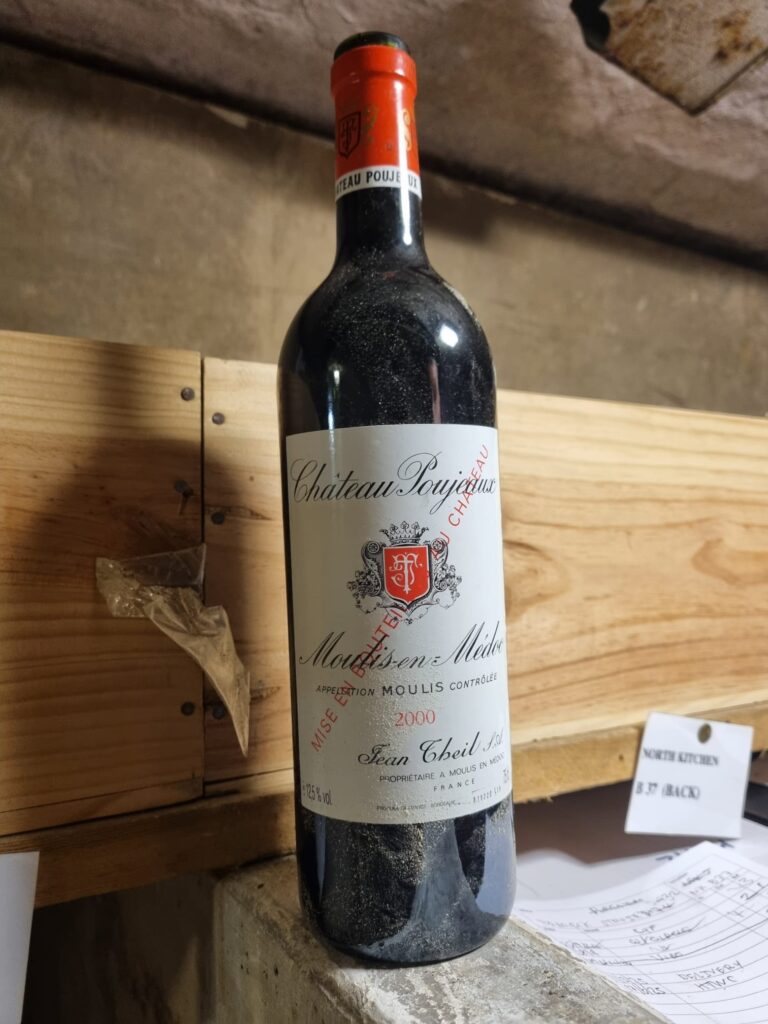
“We choose a reception wine, first course wine, main course wine, and a sweet wine. After dinner they have dessert, which is often cheese and fruit, and we offer three wines with that course. The Johnians do get looked after, which is right and proper.”
His own personal favourites are red and white Burgundy, but these days he rarely buys that for himself. “Prices have gone through the roof,” says Jim.
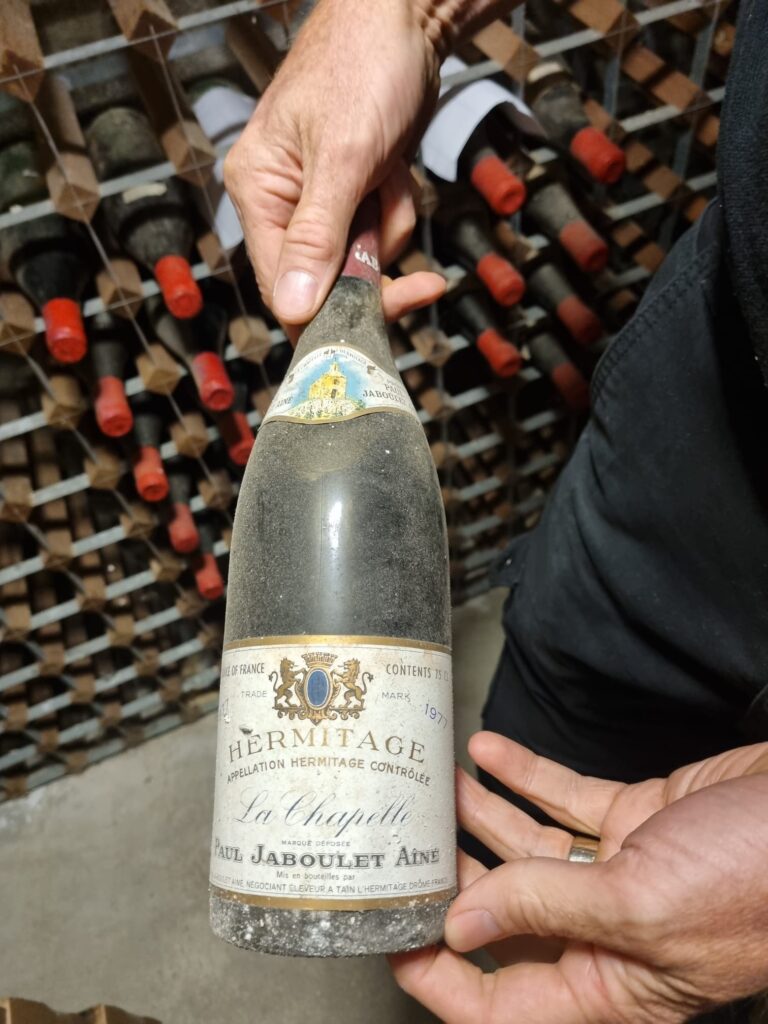
“Wine that I was able to buy when I started my career 25 years ago and maybe cost £10 to £15 is now £50 plus. So, I can’t afford to buy the wine that I really love anymore, but I like most wine if it is decent. There are certain styles that I don’t really enjoy, such as the cheaper, sweeter wines from California and some of the Australian ones. They are too confected. The minimum price for a good bottle of wine is between £8 and £12. This is because there is a fixed price for Duty, VAT, bottling costs, and labelling. If you buy a wine for £5 then maybe just 50p will be the cost of the actual wine. If you pay more, all the extra cost is the price of the wine so it will be better quality.”
Sadly, St John’s cannot offer tours of the cellars. However, anyone booking a private event at St John’s may choose from the specially selected wine list https://www.joh.cam.ac.uk/about-us/venue-hire/wine-list-2025-26
